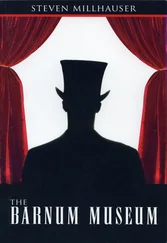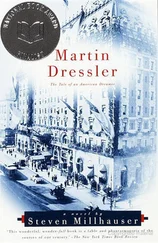Such simple performances couldn’t satisfy us for long. The laugh parties represented a leap worthy of our hunger. The object was to laugh longer and harder than anyone else, to maintain in yourself an uninterrupted state of explosive release. Rules sprang up to eliminate unacceptable laughter — the feeble, the false, the unfairly exaggerated. Soon every party had its judges, who grew skillful in detecting the slightest deviation from the genuine. As long laughter became the rage, a custom arose in which each of us in turn had to step into a circle of watchers, and there, partly through the stimulus of a crowd already rippling with amusement, and partly through some inner trick that differed from person to person, begin to laugh. Meanwhile the watchers and judges, who themselves were continually thrown into outbursts that drove the laugher to greater and greater heights, studied the roars and convulsions carefully and timed the performance with a stopwatch.
In this atmosphere of urgency, abandon, and rigorous striving, accidents were bound to happen. One girl, laughing hysterically on a couch in a basement playroom, threw back her head and injured her neck when it struck the wooden couch-arm. A boy gasping with mad laughter crashed into a piano bench, fell to the floor, and broke his left arm. These incidents, which might have served as warnings, only heightened our sense of rightness, as if our wounds were signs that we took our laughter seriously.
Not long after the laugh parties began to spread through our afternoons, there arose a new pastime, which enticed us with promises of a more radical kind. The laugh clubs — or laugh parlors, as they were sometimes called — represented a bolder effort to draw forth and prolong our laughter. At first they were organized by slightly older girls, who invited “members” to their houses after dark. In accordance with rules and practices that varied from club to club, the girls were said to produce sustained fits of violent laughter far more thrilling than anything we had yet discovered. No one was certain how the clubs had come into being — one day they simply seemed to be there, as if they’d been present all along, waiting for us to find them.
It was rumored that the first club was the invention of sixteen-year-old Bernice Alderson, whose parents were never home. She lived in a large house in the wooded north end of town; one day she’d read in a history of Egypt that Queen Cleopatra liked to order a slave girl to bind her arms and tickle her bare feet with a feather. In her third-floor bedroom, Bernice and her friend Mary Chapman invited club members to remove their shoes and lie down one by one on the bed. While Mary, with her muscular arms, held the chest and knees firmly in place, Bernice began to tickle the outstretched body — on the stomach, the ribs, the neck, the thighs, the tops and sides of the feet. There was an art to it all: the art of invading and withdrawing, of coaxing from the depths a steady outpouring of helpless laughter. For the visitor held down on the bed, it was a matter of releasing oneself into the hands of the girls and enduring it for as long as possible. All you had to do was say “Stop.” In theory the laughter never had to stop, though most of us could barely hold out for three minutes.
Although the laugh parlors existed in fact, for we all attended them and even began to form clubs of our own, they also continued to lead a separate and in a sense higher existence in the realm of rumor, which had the effect of lifting them into the inaccessible and mythical. It was said that in one of these clubs, members were required to remove their clothes, after which they were chained to a bed and tickled savagely to the point of delirium. It was said that one girl, sobbing with laughter, gasping, began to move her hips in strange and suggestive ways, until it became clear that the act of tickling had brought her to orgasm. The erotic was never absent from these rumors — a fact that hardly surprised us, since those of us who were purists of laughter and disdained any crude crossing over into the sexual recognized the kinship between the two worlds. For even then we understood that our laughter, as it erupted from us in unseemly spasms, was part of the kingdom of forbidden things.
As laugh parties gave way to laugh parlors, and rumors thickened, we sometimes had the sense that our secret games had begun to spread to other regions of the town. One day a nine-year-old boy was discovered by his mother holding down and violently tickling his seven-year-old sister, who was shrieking and screaming — the collar of her dress was soaked with tears. The girl’s pale body was streaked with lines of deep pink, as if she’d been struck repeatedly with a rope. We heard that Bernice Alderson’s mother, at home for a change, had entered the kitchen with a heavy bag of groceries in her arms, slipped on a rubber dog-toy, and fallen to the floor. As she sat there beside a box of smashed and oozing eggs and watched the big, heavy, thumping oranges go rolling across the linoleum, the corners of her mouth began to twitch, her lungs, already burning with anger, began to tingle, and all at once she burst into laughter that lashed her body, threw her head back against the metal doors of the cabinet under the sink, rose to the third-floor bedroom of her daughter, who looked up frowning from a book, and in the end left her exhausted, shaken, bruised, panting, and exhilarated. At night, in my hot room, I lay restless and dissatisfied, longing for the release of feverish laughter that alone could soothe me — and through the screen I seemed to hear, along with the crickets, the rattling window-fan next door, and the hum of far-off trucks on the thruway, the sound of laughter bursting faintly in the night, all over our town, like the buzz of a fluorescent lamp in a distant bedroom.
One night after my parents were asleep I left the house and walked across town to Bernice Alderson’s neighborhood. The drawn shade of her third-floor window was aglow with dim yellow light. On the bed in her room Mary Chapman gripped me firmly while Bernice bent over me with a serious but not unkind look. Slowly she brought me to a pitch of wild laughter that seemed to scald my throat as sweat trickled down my neck and the bed creaked to the rhythm of my deep, painful, releasing cries. I held out for a long time, nearly seven minutes, until I begged her to stop. Instantly it was over. Even as I made my way home, under the maples and lindens of a warm July night, I regretted my cowardice and longed for deeper and more terrible laughter. Then I wondered how I could push my way through the hours that separated me from my next descent into the darkness of my body, where laughter lay like lava, waiting for a fissure to form that would release it like liquid fire.
Of course we compared notes. We’d known from the beginning that some were more skilled in laughter than others, that some were able to sustain long and robust fits of the bone-shaking kind, which seemed to bring them to the verge of hysteria or unconsciousness without stepping over the line. Many of us boasted of our powers, only to be outdone by others; rumors blossomed; and in this murky atmosphere of extravagant claims, dubious feats, and unverifiable stories, the figure of Clara Schuler began to stand out with a certain distinctness.
Clara Schuler was fifteen years old. She was a quiet girl, who sat very still in class with her book open before her, eyes lowered and both feet resting on the floor. She never drummed her fingers on the desk. She never pushed her hair back over her ear or crossed and uncrossed her legs — as if, for her, a single motion were a form of disruption. When she passed a handout to the person seated behind her, she turned her upper body abruptly, dropped the paper on the desk with lowered eyes, and turned abruptly back. She never raised her hand in class. When called on, she flushed slightly, answered in a voice so quiet that the teacher had to ask her to “speak up,” and said as little as possible, though it was clear she’d done the work. She seemed to experience the act of being looked at as a form of violation; she gave you the impression that her idea of happiness would be to dissolve gradually, leaving behind a small puddle. She was difficult to picture clearly — a little pale, her hair dark in some elusive shade between brown and black, her eyes hidden under lowered lids that sometimes opened suddenly to reveal large, startled irises. She wore trim knee-length skirts and solid-colored cotton blouses that looked neatly ironed. Sometimes she wore in her collar a small silver pin shaped like a cat.
Читать дальше












